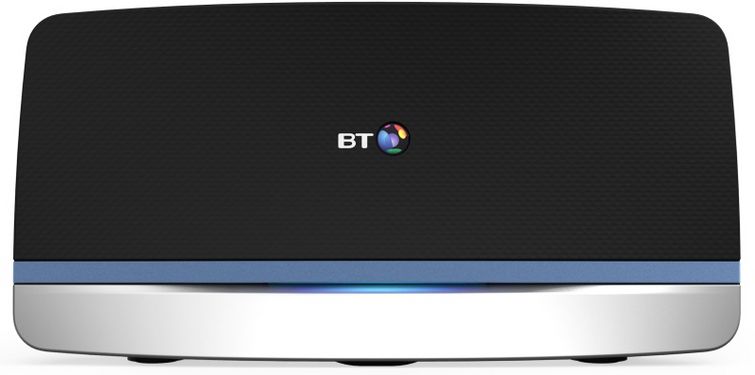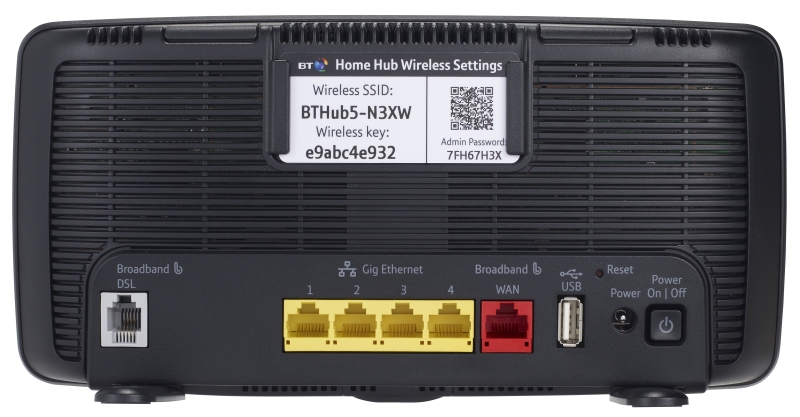Secondary Access Point

Sometimes you need to connect a smart home device to your home network that only works on 2.4Ghz Wi-Fi. This can often be problematic if your main wireless networking is dual band (both 2.4GHz and 5GHz) and even more so if it is using mesh Wi-Fi.
One simple way around these issues is to repurpose (reconfigure) an old ISP hub/router to work as a secondary access point, with just 2.4GHz Wi-Fi enabled. It can then be used to connect the problem device. In this mode it can also be used permanently to extend the reach/coverage of your wireless home network.
I have done this with several older 'Home Hubs' from BT in the past, including the HH3. This technique can also work for other brands and models of hubs/routers from UK ISPs. For this project I am using a BT Home Hub 5 (HH5). These can be picked up very cheaply on sites like eBay.
Reconfiguration

It is best to reset the device to start with. With a BT HH5 you take the tip of a sharp pencil or pen and press down the reset button for about 10 seconds. If you don't hold this button down long enough it may only reboot the router instead of resetting it. On the BT HH5 the indicator lights will go off and the front will light up green, to let know know the reset process has started. It will then flash green, before turning blue.
- Turn on the HH5 and connect it to your computer using an Ethernet cable. Use the Ethernet socket on the HH5 labelled '1'.
- If you are using a laptop, turn off its Wi-Fi now.
- Open a web browser and open the URL:
http://bthomehub.hometo access the admin web pages. You can also access this admin interface via the IP address, which defaults to:http://192.168.1.254. - Access the 'Advanced Settings'. You will need the admin password to do this.
- Under the 'Wireless' tab, disable the 5GHz Wi-Fi.
- Under the 2.4GHz Wi-Fi settings, change the SSID and password to match those of you main home Wi-Fi network. At this point you can also select the channel used if required. If you don't know what this is or don't care, then leave this bit as automatic.
- Under the 'Home Network' tab, select the 'IP Addresses' sub-tab. You need to choose a fixed IP address for this HH5 that is free on your home network and not likely to be allocated to another device via DHCP. I used
192.168.1.10on my home network. - Disable DHCP.
You now need to disconnect the BT HH5 and connect it to you main home network using an Ethernet cable between your main router or a switch and using the port labelled '1' on the BT HH5 again. It should appear on your main home network on the IP address that you allocated (192.168.1.10 in my case). If you open up a web browser to this address (e.g. http://192.168.1.10), you should find the BT HH5 web interface and it helpfully tells you which devices are connected to it.
Connecting Your Device
You can now connect your older (2.4GHz only) device. Start by temporarily pausing or switching off you main/mesh Wi-Fi in your home, leaving just this secondary access point visible within your home. Many of your existing devices will also now try and connect to this new access point (assuming they are in range).
Follow the setup and connection procedure for you problem device and it should connect to this new 2.4GHz access point without any issues. Once connected you can switch your main Wi-Fi back on and switch off this secondary access point.
Insight & Learning
I use a mesh Wi-Fi product in my home (BT Whole Home Wi-Fi) and connecting 2.4GHz only devices, especially the simpler or older ones can be a pain sometimes. This approach makes things much simpler and easier and the old hub/router can be dug out each time you need to do this. It only needs to be set up once.
Sometimes it is also handy to have a secondary access point, to extend the coverage in your home. A secondary access point like this can also be used with guests, using a separate guest SSID and password (so that you don't have to share you main home network credentials with them). I do this when I'm having a barbeque or party.
As an aside, the BT Whole Home Wi-Fi product added a guest network feature in 2018.



